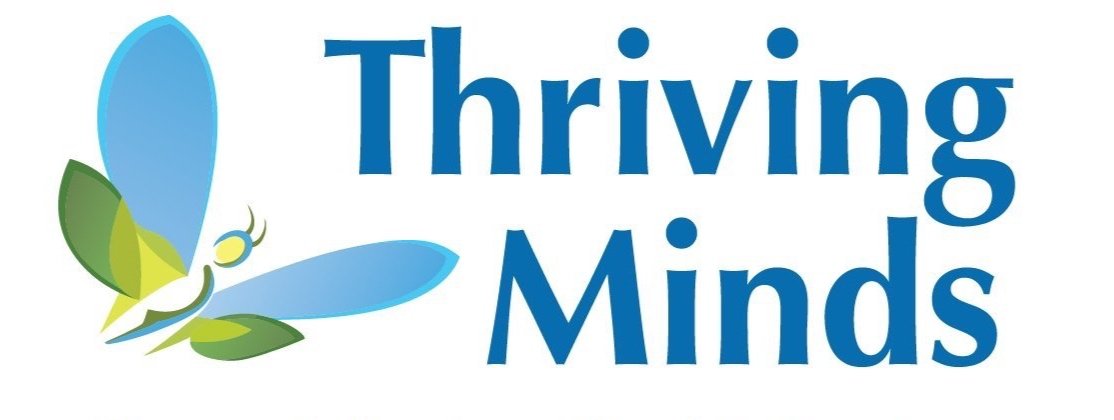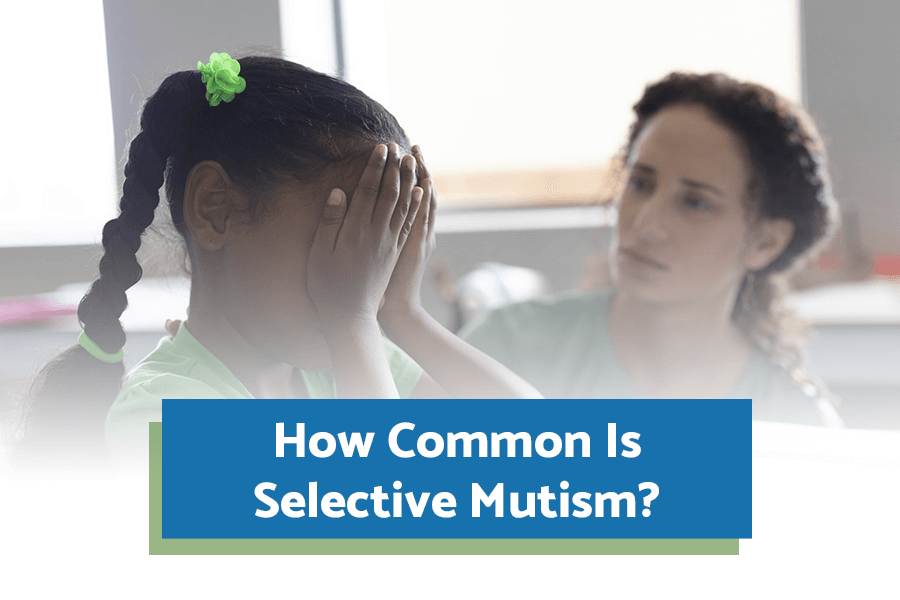Becoming a Specialist: Advanced Training and Consultation for Selective Mutism
Do you know about selective mutism? It's an anxiety disorder that often shows up in kids. Imagine this: a child can chat away at home, where they feel safe and comfortable. But at school or other social spots, they might not be able to speak at all.
Approximately 80% of children with Selective Mutism also satisfy the diagnostic criteria for an additional anxiety disorder. This isn't just about being shy. They might feel scared to talk or even find it hard to make simple gestures or facial expressions. Every child is different. Some might not speak at all in some settings, some might only talk to certain people, and some might manage to speak with a few friends but find it super hard to talk to teachers or most of their classmates.
If you have a pediatric client who might be facing these challenges, the folks at Thriving Minds Behavioral Health are there to help. We've got a team of therapists who are not only skilled but also have a lot of experience with selective mutism. We understand what these kids are going through and can very make a difference. So, don't hesitate to reach out to Thriving Minds Behavioral Health for support. Let's help every child find their voice!
How Common Is Selective Mutism?
Selective mutism is considered a relatively rare disorder, affecting about 1-2% of children. It typically begins in preschool years, and while it is more frequently diagnosed in clinical settings among boys, gender distribution is more balanced in community samples. The prevalence can be slightly higher among immigrant children and those with speech and language delays.
While selective mutism is categorized as an anxiety disorder, studies suggest that it can present with a range of associated symptoms. This can include oppositional behaviors and speech and language problems, adding to its complexity. This multifaceted nature underscores the need for comprehensive, individualized assessment and treatment approaches.
Identifying Early Signs of Selective Mutism
Consistent Silence: A child consistently fails to speak in specific social settings (like school or community events) where speaking is expected despite speaking normally in other settings (like at home).
Social Isolation: The child might avoid eye contact or appear withdrawn or socially isolated, especially in unfamiliar or structured environments.
Increased Anxiety: Signs of anxiety when speaking is expected or required, such as freezing, clinging to caregivers, crying, or having temper tantrums more than usual under social pressure.
Nonverbal Communication: The child might excessively use gestures or nodding instead of speaking, even when directly spoken to in social settings.
Physical Rigidity: In social settings, the child may seem physically stiff or awkward, possibly showing reduced facial expressions.
Selective Speaking: The child might speak freely to certain people (like parents) but not to others (like teachers or peers), which is not just typical shyness.
Things to Know for Selective Mutism Professionals
Multidisciplinary Approach: Effective management often requires a collaborative approach involving educators, speech therapists, psychologists, and psychiatrists. Each professional brings a unique perspective and skill set, crucial for comprehensive care.
Early Identification and Intervention: Recognizing signs early and starting intervention can prevent the condition from becoming more severe. Professionals should be trained to notice the early symptoms of selective mutism and understand the distinction between it and typical childhood shyness.
Parent and Teacher Education: Professionals should educate parents and teachers about the nature of selective mutism, encouraging supportive strategies instead of pressure or punishment. This includes fostering a supportive environment that facilitates speech.
Behavioral Techniques: Professionals should be skilled in behavioral interventions, which help the child gradually increase their comfort with speaking in more settings.
Communication Strategies: It is essential to prioritize verbal communication in a supportive and gradual manner. Building a trusting relationship where the child feels safe to speak is key. Techniques such as modeling language, giving ample response time, and using simple, open-ended questions can encourage verbal interactions.
Cultural Sensitivity: Understanding the child's cultural background is crucial, as cultural factors can influence the behavior and the family's perception of the disorder. Professionals should adapt their strategies to be culturally sensitive and inclusive.
Long-term Support and Follow-up: Selective mutism can be a long-lasting condition. Ongoing support and periodic assessments are important to adjust interventions as the child develops and their environment changes.
Professional Development: Keeping updated with the latest research and treatment modalities in selective mutism is important for providing the best care. Engaging in continual professional development and networking with other professionals in this field can enhance a practitioner's effectiveness.
What Causes Selective Mutism?
Anxiety Disorders: Many children with selective mutism also have an underlying anxiety disorder. It's often considered a complex anxiety disorder itself, with a strong relation to social anxiety. The fear of speaking or acting in a way that could lead to embarrassment may significantly contribute to the condition.
Family History: There may be a genetic predisposition to anxiety disorders, including selective mutism. Children who have family members with anxiety disorders or selective mutism are at a higher risk of developing the condition themselves.
Temperament: Children who are inherently shy or have an inhibited temperament are more likely to develop selective mutism. These children may have a more sensitive behavioral inhibition system, causing them to react negatively to new situations or people.
Environmental Influences: Situations like starting a new school, moving to a new area, or changes within the family can act as triggers for a child who is already prone to anxiety. The stress from these situations may exacerbate or trigger the onset of selective mutism.
Speech and Language Issues: Some children with selective mutism may also have speech and language difficulties. Fear of being judged or not being understood can contribute to their reluctance to speak.
Developmental Delays: In some cases, developmental delays related to other conditions like autism spectrum disorders might overlap with or contribute to the symptoms of selective mutism.
Diagnosis of Selective Mutism
Diagnosing selective mutism typically involves a mental health professional assessing the child through various methods. Initially, a clinical interview with the parents is conducted to gather detailed information about the child’s development, behavior, social interactions, and family history. This helps identify any patterns of anxiety or fear of speaking in specific settings.
Observations of the child in different environments, such as at school and at home, are crucial. This helps distinguish selective mutism from other communication disorders, as the child might speak normally in one setting but not another.
Standardized assessments may also be used, including questionnaires and behavioral assessments, which can help gauge the severity of the condition and the specific situations that trigger the child's mutism.
The diagnostic criteria from the Diagnostic and Statistical Manual of Mental Disorders (DSM-5) are typically employed to ensure that the diagnosis meets standardized guidelines. These criteria focus on the consistent failure to speak in specific social situations where there is an expectation for speaking despite speaking in other situations.
Selective Mutism Management and Treatment
The management and treatment of selective mutism involve a collaborative, multidisciplinary approach tailored to the needs of each child. Cognitive-behavioral therapy (CBT) is often central, aimed at gradually reducing anxiety through controlled exposure to speaking situations and providing positive reinforcement for efforts.
Family involvement is crucial, as therapy can help modify family interactions that inadvertently maintain mutism. Speech and language therapy may also be employed if the child has underlying communication difficulties.
In school, tailored interventions help integrate the child more comfortably into activities. Overall, the treatment plan combines these elements with ongoing adjustments based on the child's progress and changing needs, requiring close cooperation between families, schools, and mental health professionals.
Frequently Asked Questions
What professional helps with selective mutism?
Professionals who treat selective mutism, primarily a childhood anxiety disorder, include psychologists, speech-language pathologists, and psychiatrists. Psychologists often use cognitive-behavioral therapy to alter thoughts and behaviors causing anxiety about speaking. Speech-language pathologists enhance communication skills and foster verbal engagement across various settings.
Is selective mutism a form of autism?
Selective mutism and autism are distinct conditions, though both can affect communication. Selective mutism is primarily an anxiety disorder where children are unable to speak in specific social settings despite being capable of speaking normally in comfortable environments.
Autism Spectrum Disorder, however, is a developmental disorder that broadly impacts social skills, communication, and behavior across all settings. The communication difficulties in autism are part of wider developmental delays, unlike anxiety-driven selective mutism, where speech is normal in familiar settings. Understanding these differences is crucial for effective diagnosis and treatment.
What is a 504 plan?
A 504 plan for children with selective mutism provides specific accommodations tailored to their needs in the educational environment. This plan might include alternative communication methods, modifications to oral presentation requirements, and adjustments in testing protocols. Additionally, it can offer preferential seating to reduce anxiety, extended time for assignments, regular support check-ins, and peer assistance to enhance comfort and participation in school activities.
Can selective mutism go away?
Selective mutism can improve or completely resolve with appropriate intervention, but the outcome can vary depending on several factors. Early detection and treatment are crucial in improving the chances of overcoming the condition. Therapeutic approaches, such as cognitive-behavioral therapy (CBT), which helps children manage anxiety and gradually become more comfortable with speaking in various situations, are often effective.
Consistent support from family, therapists, and school personnel also plays a significant role in recovery. While some children may overcome selective mutism completely as they grow older and develop more coping skills, others might continue to experience some level of social anxiety into adulthood. Thus, the prognosis for selective mutism is generally good with early and sustained intervention, but it can differ based on individual circumstances.
How do you test for selective mutism?
Testing for selective mutism usually involves a combination of clinical interviews, behavioral observations, and assessments. A mental health professional begins by interviewing the child's parents to learn about the child's developmental history and observe the child's behavior across different settings, such as home and school.
Observations help identify specific situations where the child does not speak. It's also important to rule out other conditions, like autism or hearing impairments, as the primary cause for lack of speech. The assessment may involve the child's teachers and other caregivers to provide a comprehensive view of the child's social interactions and communicative behaviors.
Finding a Treatment Professional for Kids with Selective Mutism
Finding the right treatment for children with selective mutism is crucial for effective intervention and support. When seeking more knowledge on how to treat a pediatric patient, look for professionals who have specific experience and training in treating selective mutism, such as child psychologists, psychiatrists, or speech therapists.
These professionals should be well-versed in cognitive-behavioral therapy techniques, which are commonly used to treat anxiety disorders, including selective mutism. Our team at Thriving Minds is ready to expand your selective mutism knowledge. Access our professional resources to learn more.








